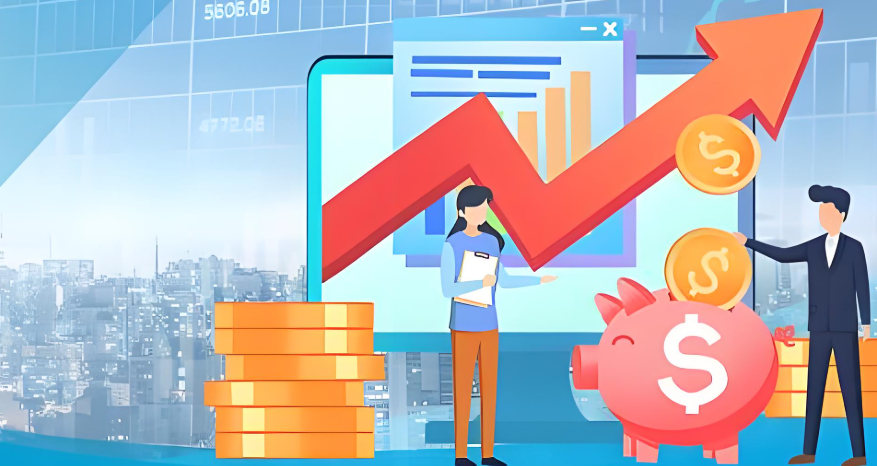Supply Constraints Will Lead the U.S. into Stagflation
Advertisements
The economic landscape of the United States is poised for a shift, spurred by policy changes that are expected to invigorate growth. Recently, Schroders Investment raised its economic forecasts, indicating optimism towards the American economy, albeit with a cautionary note regarding the feasibility of maintaining the ambitious agendas previously discussed. The macroeconomic narratives surrounding the U.S. paint a complex picture where aggressive fiscal strategies could lead to unintended consequences.
Contrary to a narrative of "American consumer downturn," the real hits to economic growth are emerging from disruptions in global trade and supply chains rather than domestic spending patterns. Despite the efforts of comprehensive fiscal stimulus, supplemented by retaliatory tariffs and the depreciation of currencies against the dollar, the downward pressure on inflation presents limited risks. Inflation seems to be a tricky beast, tethered by multiple forces, and expectations remain divergent.
The ramifications of radical policy measures extend well beyond U.S. borders, influencing regional economies worldwide. We may witness a cascading effect, leading to weakened trade, stalling investment decisions, and an overall erosion of market confidence, all of which could trigger a recession across various economies while simultaneously drawing the U.S. into a potential stagflation scenario.
Imagine a U.S. economy grappling with the dilemmas of supply constraints amidst a backdrop of radical policy implementation. An extensive fiscal stimulus might be on the table, yet the pulsing demand could worsen supply issues considerably. The effects of a strong dollar and improving margins might offset some initial impacts; however, raising tariffs could inflate the prices of goods substantially. This conundrum paints a vivid picture of a struggle between consumer resilience and structural impediments.
Yet, it is the challenges posed by immigration policies that could unleash a more significant threat to inflation. A crackdown and massive deportations could potentially create labor shortages, driving up wages and consequently impacting the service sector inflation rates. The complexities of labor laws, social programs, and the economy’s responsiveness intertwine with the issue of immigration, making it a multi-faceted challenge that extends beyond mere numbers.

Insights from the Peterson Institute for International Economics reveal critical details regarding the ramifications of U.S. trade policies. The implementation of a ten percent import duty acts like a pebble thrown into the economic pond; the ripples may seem manageable initially, yet the longer-term consequences are profound. This measure could disrupt the delicate balance of supply and demand for imported goods in the short term, pushing related prices and, thus, inflation higher temporarily – by about a percentage point. However, should the U.S. implement drastic measures, such as large-scale deportation of immigrants, the repercussions would resemble a tempest, decimating labor supply predominantly in sectors reliant on manual labor, all while costs spiral higher and production faces significant hurdles.
Moreover, the dynamics of consumption could also destabilize as shifts in population structure occur. This amalgamation of factors could send inflation soaring beyond three percentage points, with the recovery process drawn out over several years. Industries would need to adjust, reallocating labor and restructuring to stabilize the economy, which induces its own set of challenges.
The trajectory of U.S. GDP growth has garnered substantial attention amidst these unfolding events. The interwoven challenges – akin to a constraining rope – impede economic advancement, resulting in a high probability of declining growth. Certain sectors experience excess capacity, and fluctuations in global oil prices exacerbate operational costs for businesses, presenting significant hurdles to sustained progress. Yet, forecasts suggest that if the government plays its cards right and introduces a series of targeted stimulus policies that bolster emerging industries while easing tax burdens for businesses, a breakthrough may be achieved, lowering the stagnation risk and reigniting growth before 2026.
Compounding this situation are shocking new findings from the Pew Research Center, indicating that around 8.3 million U.S. employees identified as illegal immigrants as of 2022. This statistic underscores a vital narrative in the current economic discourse, spotlighting challenges tied to workforce composition as well. The analysis provided by Schroders Investment centers on this disrupted supply-side of the economy, suggesting that these impediments could drag down potential U.S. growth to an annual rate of merely 1.5%. This signals a troubling divergence between nominal and real growth trajectories, with inflation setting its sights forward.
Looking towards 2025, one could assume that global monetary policy direction may diverge considerably. While other central banks seek to slash interest rates aggressively to stimulate recoveries, the United States, caught in the quagmire of stagflation, finds itself in a precarious balancing act. The Federal Reserve stands at a crossroads, tasked with fostering economic expansion amidst persistent inflationary pressures, resulting in a dilemma that complicates the monetary policy landscape further. A strong dollar creates a foreign relations complexity, bolstering purchasing power at home but pressuring exports and other facets of economic health.
The growing discontent toward the government's handling of these economic challenges will likely provoke increasing criticism. Economic downturn resonates deeply with citizens, affecting daily life and national progress. The political pressures mounting around Fed Chair Jerome Powell could lead to a reassessment of leadership come May 2026, where he may face pressure from advocates of more accommodating monetary policies aiming to revitalize the stalled economic engine.
Expectations call for the Fed to reduce interest rates to approximately 3% by the close of 2026, alongside a dual deficit which could see the dollar further retreating in value. As we navigate the intertwined paths of policy reform and economic recovery, the stakes continue to elevate, compelling stakeholders to reconsider their strategies in the face of relentless innovation and adversity.
Post Comment